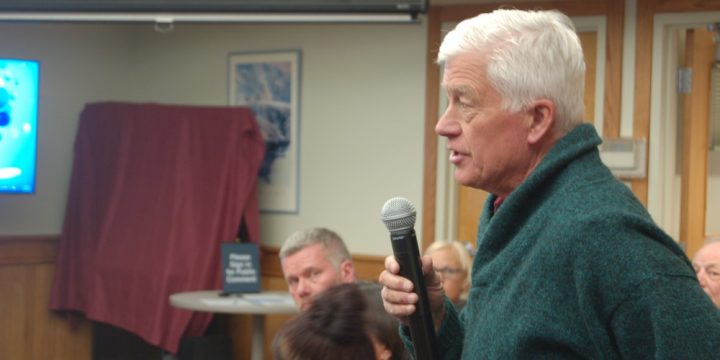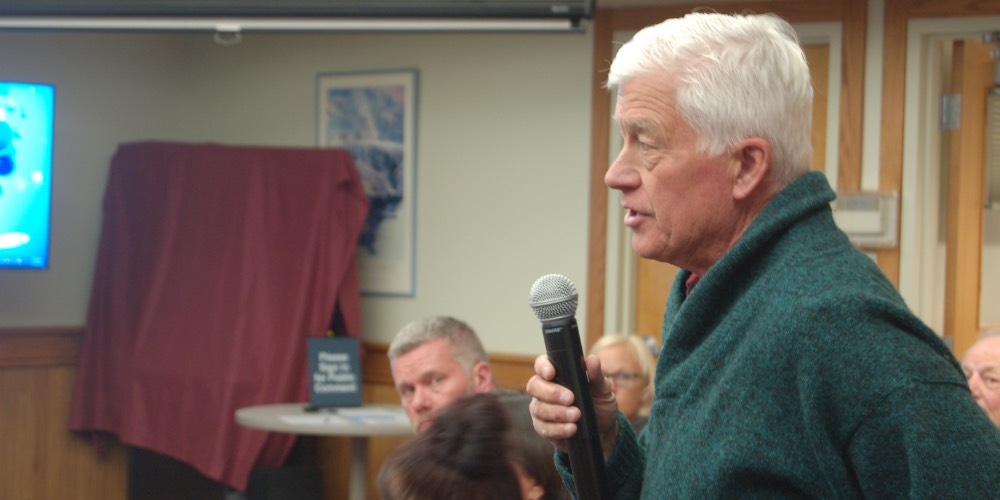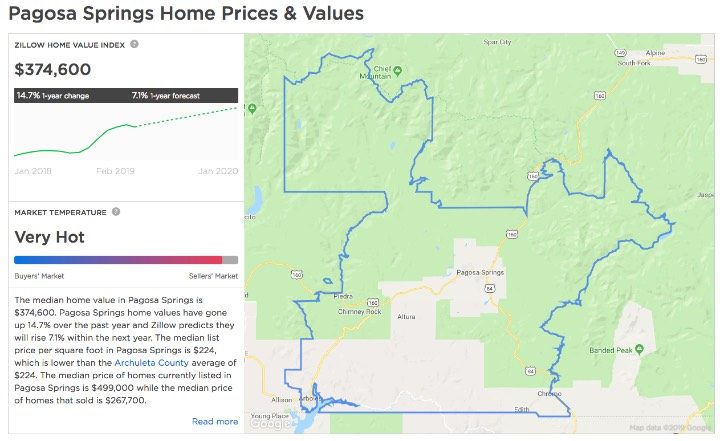There is a $254,498 gap between the median sales price of a single-family home and the price that is affordable for a family earning 100% of the area median income…
— Town of Breckenridge CO website
As I noted in Part One, I wasn’t the only person frustrated by the Pagosa Springs Town Council’s housing discussion on March 5. It seemed pretty obvious that the Council was finally ready to approve the ‘Roadmap to Affordable Housing’ report presented to them by Pagosa Housing Partners (PHP) back in early January. But the Council and staff seemed oddly hesitant to continue funding the non-profit team — PHP — that did the research and created the new report.
Did the Town really need to go back to Square One, and run through another lengthy RFP process… before anything moves forward?
There were additional reasons to feel frustrated.
At one point in the discussion, Mayor Don Volger turned his attention to the audience, and asked for public comments. The first audience member to speak was Town Planning Commission chair Peter Adams. Mr. Adams is also a builder, and he’s been active in affordable housing groups for at least the past three years. As he stood, he was holding several sheets of paper filled with handwritten notes.
“I think this is something that the Council might be interested in hearing. It will probably take about eight minutes.”
Did the Council have enough interest in this subject, to endure eight minutes of information?
Mayor Don Volger smiled: “Can you cut it down to five minutes?”

Mr. Adams:
“I’ve been frustrated about the housing [crisis] going on, for many years now, and I hope you are too. I haven’t seen anything really substantial happen. We have some new ADU [Accessory Dwelling Unit] rules, and that’s helping, and the Town has increased the allowable density in some areas.
“But the ADUs I have seen built, quite frankly, I don’t consider to be workforce housing. You know, the ones I’ve looked at are charging $900 to $1000 a month [rent].”
Although Mr. Adams didn’t expand on that comment, we know that $1000 monthly rent is not ‘affordable’ in a community where many employees still take home less than $1600 a month.
He continued:
“So I want to suggest something that I didn’t see in the PHP report. It’s something we can do right now, and start immediately.
“I’ve given it a lot of thought. I’ve looked at the ‘best case’ scenarios. And it’s a losing situation here.”
That is to say, it’s a losing situation here… unless someone in a position of power does something substantial. The folks on the Town Council are in such positions of power, with control of a multi-million-dollar budget and with the ability to make rules and regulations for the community. Clearly, Mr. Adams is hoping to see some bold action.
“This morning, I spoke with Laurie Best, the senior planner with the Town of Breckenridge. Basically, I called her, and told her I was frustrated. And what can a town like Pagosa Springs do. So she went through her history..
“Breckenridge has tried various incentives, for builders, stuff like that. They’ve put out RFPs.
“They finally got a developer, through an RFP, to build the community an affordable, workforce housing project. Then the Recession came along. The developer got very, very nervous about his responsibility and moving forward and everything else. So basically, the Town took over the project. And they completed the project. And saved $1 million.
“The Town of Breckenridge realized they could build affordable housing at a lower price point than hiring out a developer. What they learned is, they could do it themselves…”
Although I’ve been researching affordable housing issues, off and on for the past 14 years, I’d never heard about this particular Breckenridge effort. So this morning I visited the Town of Breckenridge website, and found a brief description of their housing programs.
A few excerpts:
WORKFORCE HOUSING
The goal of the Breckenridge Workforce Housing Program is to insure that affordable housing is integrated throughout the community to provide a variety of housing options for the local workforce.
Workforce Housing is an issue in many communities throughout Colorado and is especially critical in resort communities. The Town of Breckenridge is taking a proactive approach to meet the needs of local employees, and is addressing the issue through a variety of tools and strategies. In 1988 the first dedicated workforce units were established in Breckenridge as a result of the Town’s newly adopted development code.. The first deed restrictions associated with these units were not very sophisticated and generally only prohibited the use of the properties for short-term rentals. As time went the deed restrictions became more sophisticated incorporated elements such as the requirement of full-time work in Summit County and Income testing.
Currently there are approximately 1,000 deed restricted dwelling units in Breckenridge. To put that in perspective, the PHP ‘Roadmap’ plan calls for 100 affordable housing units to be built here in Archuleta County by 2025.
From the Breckenridge website:
WHAT IS AFFORDABLE WORKFORCE HOUSING?
Housing is affordable when the monthly payment (rent or mortgage) is equal to no more than 30% of a household’s gross income. Although there is some variation, this standard for affordability is commonly applied by federal and state housing programs, mortgage lenders and leasing agents.
THE AFFORDABILITY GAP
The housing affordability gap is the gap between the maximum mortgage that a four person household earning 100% of the area median income can afford and the median sales price of housing in Summit County at the average annual interest rate. There is a $254,498 gap between the median sales price of a single-family home and the price that is affordable for a family earning 100% of the area median income.
Based on the typical employee family in Pagosa Springs, an affordable home would be priced in the $100,000 to $200,000 range, although for many working families, even $100,000 is beyond their means.
It appears that the median home price in Pagosa Springs, in 2019, is nowhere near $200,000.
From the Zillow.com website, March 7, 2019:
The median home value in Pagosa Springs is $374,600. Pagosa Springs home values have gone up 14.7% over the past year and Zillow predicts they will rise 7.1% within the next year. The median list price per square foot in Pagosa Springs is $224… The median price of homes currently listed in Pagosa Springs is $499,000…
The real estate market is described by Zillow as ‘Very Hot.’ That is, a ‘sellers market.’
Time for some bold action, by the people in power?


